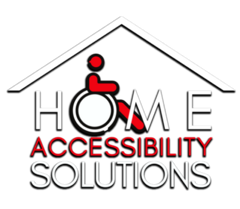Accessibility is a fundamental aspect of any inclusive society. It ensures that everyone, regardless of their physical abilities, can navigate and participate in various environments with ease and dignity. One crucial yet often overlooked aspect of accessibility is the width of doorways. While it may seem like a minor detail, doorway widening plays a significant role in enhancing accessibility for individuals with disabilities. In this article, we will explore why doorway widening matters, its impact on accessibility, and the benefits it brings to both individuals and society as a whole.
Understanding Doorway Widening
Doorway widening refers to the process of increasing the width of door openings to accommodate individuals with mobility aids such as wheelchairs, walkers, or scooters. Standard doorways are typically designed with a width of around 32 inches, which may be too narrow for many mobility devices and can pose significant barriers to accessibility. By widening doorways, spaces become more inclusive, allowing individuals with disabilities to move freely and independently.
The Importance of Accessibility
Accessibility is not merely a matter of convenience; it is a fundamental human right. The United Nations Convention on the Rights of Persons with Disabilities recognizes the importance of accessibility in enabling individuals with disabilities to fully participate in society on an equal basis with others. Accessible environments promote independence, inclusion, and equal opportunities for all members of society, regardless of their abilities.
Challenges Faced by Individuals with Disabilities
For individuals with disabilities, navigating through narrow doorways can present numerous challenges and obstacles. A standard-sized doorway may not provide enough clearance for a wheelchair to pass through comfortably, leading to frustration and dependency on others for assistance. Moreover, attempting to maneuver through tight spaces can increase the risk of accidents and injuries, further hindering mobility and autonomy.
Impact on Quality of Life
The width of doorways directly impacts the quality of life of individuals with disabilities. Imagine being unable to enter a restroom, office building, or place of worship simply because the doorway is too narrow to accommodate your wheelchair. Such barriers not only limit access to essential services and amenities but also contribute to feelings of exclusion and marginalization. By widening doorways, we can create environments that promote independence, dignity, and equal participation for all.
Benefits of Doorway Widening
Enhanced Mobility
Widening doorways provides individuals with disabilities greater freedom of movement, allowing them to navigate spaces with ease and confidence.
Independence
Accessible doorways empower individuals to access buildings and facilities independently, reducing reliance on assistance from others.
Inclusivity
By accommodating diverse needs, widened doorways promote inclusivity and diversity within communities, fostering a sense of belonging for all individuals.
Compliance with Regulations
Many countries have established accessibility standards and regulations that mandate the widening of doorways in public buildings and facilities. Adhering to these guidelines ensures compliance with legal requirements and promotes equal access for all.
Economic Benefits
Creating accessible environments through doorway widening can attract more customers, visitors, and employees, thereby benefiting businesses and organizations both socially and economically.
Social Equity
Access to essential services, employment opportunities, and recreational activities is essential for social equity and cohesion. Widening doorways helps remove barriers that prevent individuals with disabilities from fully participating in society.
Implementing Doorway Widening
Widening doorways requires careful planning, design, and construction to ensure compliance with accessibility standards and regulations. Here are some key considerations for implementing doorway widening projects:
- Assessing Needs: Conduct a thorough assessment of the specific accessibility needs of the space and its users, taking into account factors such as the width of mobility devices and the volume of pedestrian traffic.
- Designing Solutions: Work with architects, engineers, and accessibility experts to develop design solutions that optimize doorway width while maintaining structural integrity and aesthetic appeal.
- Construction: Hire experienced contractors with expertise in accessibility modifications to execute the widening of doorways safely and efficiently, minimizing disruption to occupants and visitors.
- Compliance: Ensure that all doorway widening projects comply with relevant accessibility standards and regulations, such as the Americans with Disabilities Act (ADA) in the United States or the Equality Act in the United Kingdom.
- Education and Awareness: Raise awareness among stakeholders about the importance of accessibility and the benefits of doorway widening, fostering a culture of inclusion and equality within the community.
Expanding on the Importance of Doorway Widening
- Continued Advocacy: Advocate for policy changes and funding initiatives that support accessibility improvements, including doorway-widening projects. By championing the rights of individuals with disabilities, we can drive positive change at the local, national, and global levels.
- Collaboration and Partnership: Foster collaboration among government agencies, non-profit organizations, businesses, and community groups to address accessibility challenges comprehensively. By working together, we can leverage resources and expertise to implement effective solutions and create barrier-free environments for all.
- Long-Term Planning: Incorporate accessibility considerations into long-term urban planning and development strategies to ensure that future infrastructure projects prioritize inclusivity and accessibility. By adopting a proactive approach to accessibility, we can avoid costly retrofits and create sustainable, barrier-free environments that benefit everyone.
- Empathy and Understanding: Cultivate empathy and understanding towards individuals with disabilities, recognizing their unique challenges and contributions to society. By fostering a culture of empathy and inclusion, we can create communities that embrace diversity and celebrate the inherent worth and dignity of all individuals.
Conclusion
In conclusion, doorway widening is vital for creating inclusive environments that respect the rights and dignity of individuals with disabilities. By accommodating diverse needs, widened doorways remove barriers to participation and promote independence and inclusion. Prioritizing accessibility in design and planning processes is essential to uphold social equity and justice. Widened doorways also contribute to community safety and resilience by facilitating emergency evacuation and access to essential services.
Through collective efforts, we can build a more inclusive society where everyone has the opportunity to thrive. Investing in doorway widening demonstrates our commitment to diversity and inclusion and reflects our values as a society. Let us continue advocating for accessibility and removing barriers to ensure that doorways are gateways to opportunity for all.


